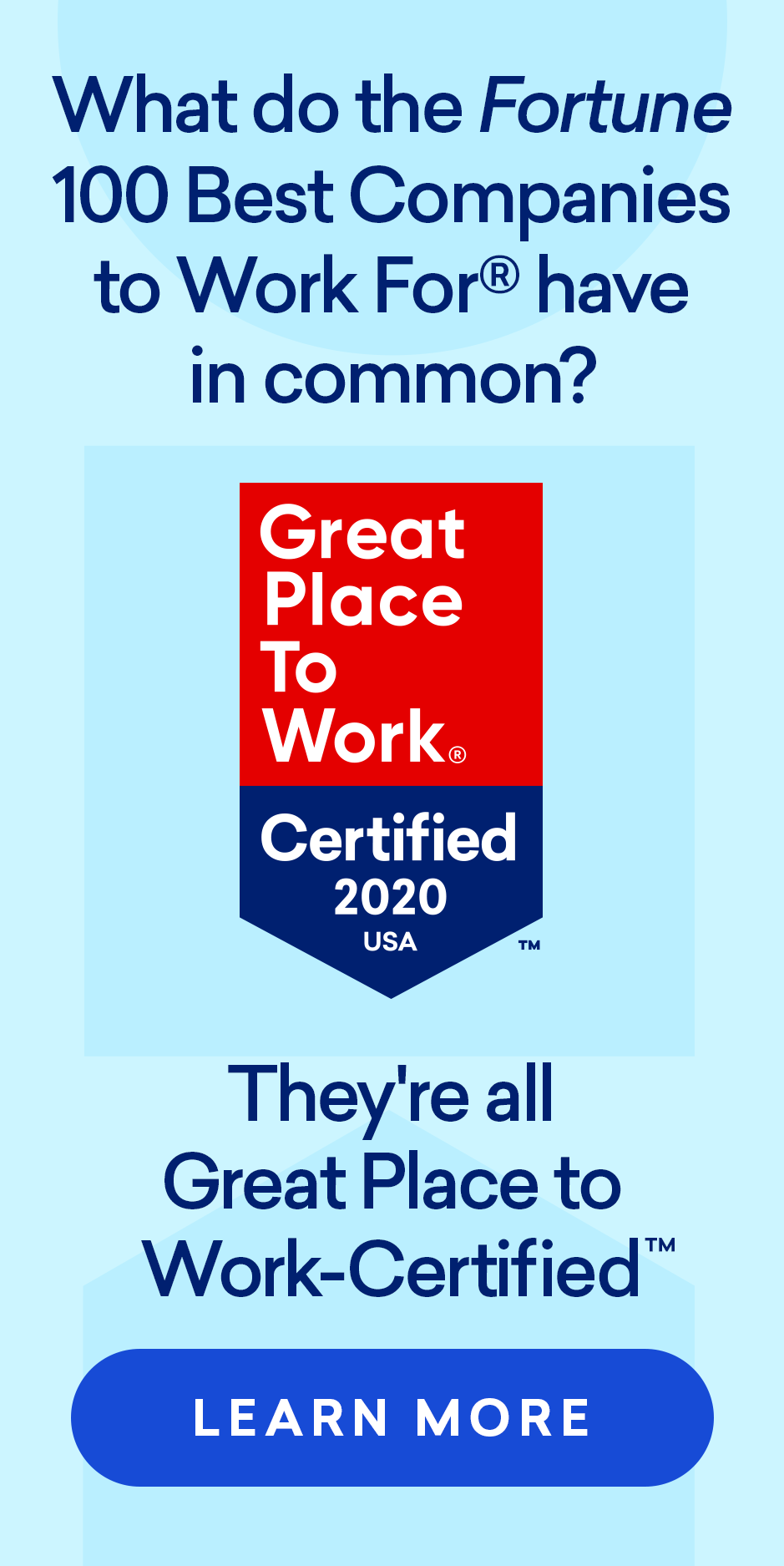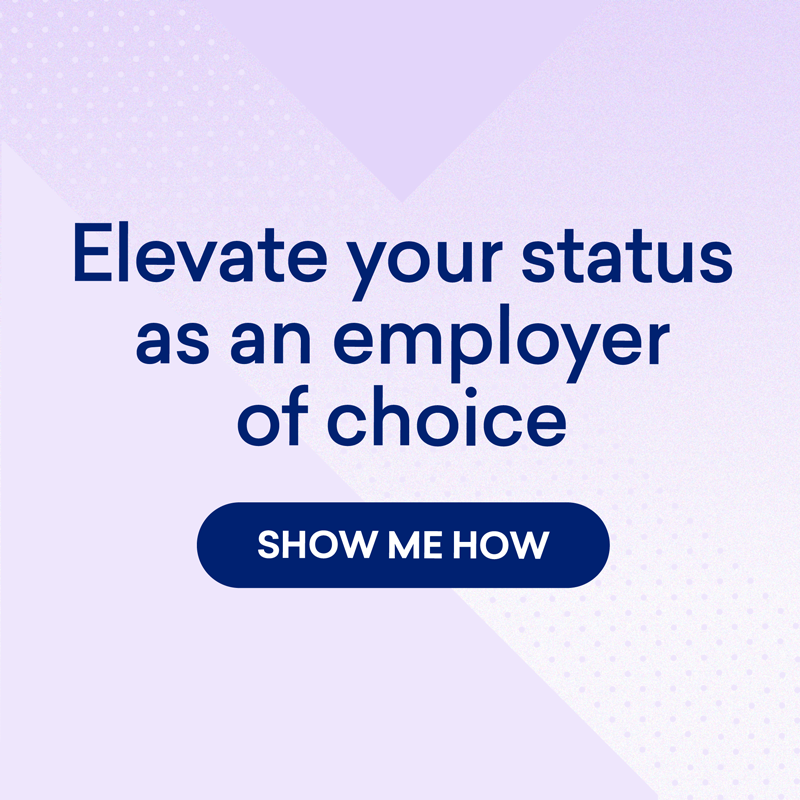While this is a political hot button, in business most leaders know that shying away from inclusion will lead to lower profits, less innovation, higher attrition and a status quo consumer market. While we will have a new President in the U.S., we still have a long way to go to a great place to work FOR ALL.
In the weeks following the U.S. election, the things that divide us suddenly feel a lot greater than the things that bring us together.
As we wait to see what a new administration could mean for the country, employers and jobs, it might be tempting to pause or pull back from activities that promote diversity and inclusion.
This retreat would ignore 35 years of business research. Year after year, study after study has shown diversity improves innovation, brand awareness and client retention, and results in higher revenue and gross profits. The latest data point can be found in the ranking my company—research and consulting firm Great Place to Work—just published with Fortune Magazine of the 2016 Best Workplaces for Diversity. According to our analysis, revenue growth at these 50 companies was 24% higher than at other U.S. organizations that are Great Places to Work-Certified™
A “Diversity retreat” would also defy our surveys of over 100,000,000 employees that say if you have a workforce that is dominated with people who feel:
- that their ideas matter as much as anyone else’s,
- that hard work will pay off for them in same way that it will for everyone else,
- that their leaders value and respect them and people like them,
they will double down on their commitment to the organization.
As we’ve learned through years of studying corporate culture, the best workplaces don’t hide their differences, they celebrate them. By honoring what makes individual employees and specific employee groups unique, workplaces establish environments where everyone feels valued, respected, safe, and that what they do makes a difference. And those organizations outperform less-inclusive, less-fair peers, because they’re better at cultivating the full human potential of all their people.
For three decades, many companies have been paying lip service to diversity. You don’t need to look hard to find examples of businesses that claim to be committed to recruiting more people of color, promoting more women into management positions, or offering more opportunities to people with physical disabilities. But putting promises into action can be more challenging than it looks.
Making Diversity Work
Getting started could be as simple as conducting an audit of the work experience of your management and staff broken out along gender and racial/ethnic lines to see where you are, and where you could improve. Our data shows significant differences in the work experiences across different demographic groups. High attrition rates of the “hard to find” result from these differences
From there, there’s no reason to reinvent the wheel. Here are some other suggestions, including some from companies on the 2106 Best Workplaces for Diversity, 2016 Best Workplaces for African Americans, Best Workplaces for Asian Americans, and Best Workplaces for Latinos.
Go on the record. You’d be joining a number of U.S. CEOs who have publicly committed or recommitted to diversity programs. Immediately after the election, for example, Tim Ryan, U.S. chairman and senior partner at PricewaterhouseCoopers LLP, wrote on Medium, “Now, more than ever before, it is imperative to keep the dialogue going, respect our different points of view, and continue our commitment to be a fully inclusive workplace.” Likewise, Arne Sorenson President and CEO at Marriott International Inc. and an advocate for LGBT equality, published an open letter on LinkedIn urging President-elect Donald Trump to use his position promote inclusiveness, including at work. And earlier this year, Randall Stephenson, CEO of AT&T, celebrated his firm’s diverse workforce even as he spoke out in defense of the Black Lives Matter movement.
What do you SEE? When you look at your Board of Directors, Executive Team and Senior Managers, what do you see? Do you see people that look like your desired customer base? Or do they look like you? Do these “pictures” give your employees the confidence that if they excel they can make it to one of these levels? If not, your efforts will weaken your credibility as a leader. They will also weaken the effectiveness of your Diversity Executive. We have surveyed 100,000,000 employees. We can tell you with 99% confidence that you are about to lose great people because your actions don’t match your diversity messaging.
Reject the “Hard to Find” crap. Your company innovates and solves highly complex problems everyday. Using the exact same leadership focus, curiosity, design thinking you can solve this problem too. Ben & Jerry’s is based in Vermont where less than 2% of the population is African-American, yet they exceed that number in their employee base. Why? They set interview targets that require that recruiters develop a diverse pool of “HIGHLY QUALIFIED” candidates before the manager can start the interview process. Due to pressure from managers, only great, value-adding recruiters have survived.
Put someone in charge. But make sure this individual is an outstanding senior executive whose track record is at least equal to those on the senior leadership team. If not, your efforts will not deliver results. The employees will see this appointment as politically driven vs. business-performance driven. Initiatives won’t go far without an innovative leader who will disrupt the status quo; that is what the companies on our list have done. It’s not surprising that many organizations on our best workplaces for diversity lists have outstanding executives in upper management-level positions who oversee their organization’s diversity efforts and report directly to the CEO or other C-suite executive. Some of those organizations include PwC, which has a chief diversity officer; NVidia, which has a chief administrative officer responsible for meeting diversity goals; Hyatt Hotels Corp., and USAA.
Create opportunities to celebrate differences. Companies such as Baptist Health South Florida and FedEx Corp. host multiple events throughout the year where employees learn about each other’s cultures and backgrounds. A substantial portion of employees at Katalyst Technologies are from India, so to celebrate Diwali, the Indian festival of lights, the company sends boxes of traditional Indian sweets to its Indian employees along with cards signed by managers.
Make a financial commitment to do better. At the same time Microsoft disclosed failing to achieve diversity milestones for 2016, the company said starting in 2017 it will tie meeting those goals to senior executives’ bonuses. Microsoft Chief Executive Officer Satya Nadella also talks about diversity at monthly Q&A sessions with employees. And the company publishes an annual diversity report.
Get involved. Companies are showing their support of employees by coming together to tackle an onslaught of state bills limiting LGBT and transgender people’s rights expected to be introduced at the beginning of 2017. Salesforce, No. 35 on the 2016 Best Workplaces for Diversity, helped organize a mid-November summit to discuss strategies for addressing Texas legislation that would void nondiscrimination ordinances, and proposals elsewhere that would restrict LGBT rights.
Read more on the topic in our new report on the Best Workplaces for Diversity. And expect to hear more from us on this important topic in the coming months, including at the Great Place to Work FOR ALL conference in Chicago in May 2017.
Don’t retreat or head to the sidelines. Go deeper into what we call the “trust game”—creating a work environment where every employee trusts their leaders, takes pride in their jobs and enjoys their colleagues. Deepen your commitment to create a great place to work FOR ALL. Do it for your people. Do it for your business results.
Do it for your country. Because work is a space that can help unite the United States during this divided time. It is a space where trust—among people of different political persuasions, of different education levels, races, sexes, ages and sexual orientations—can be rebuilt. Where bonds of friendship can grow. Great workplaces for all can help our society come together, stronger, greater than ever.

















